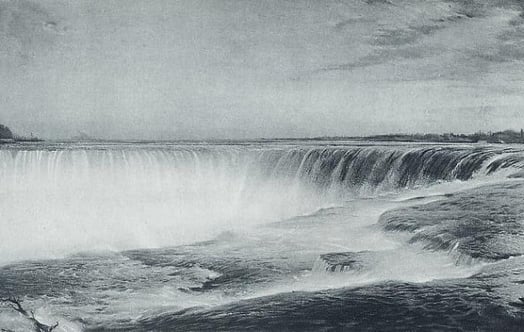The Vattenfall seat belt
The development of the seat belt in Sweden was not a result of the Swedish car industry's ingenuity. It was actually a result of Vattenfall's work to prevent accidents at its workplaces.
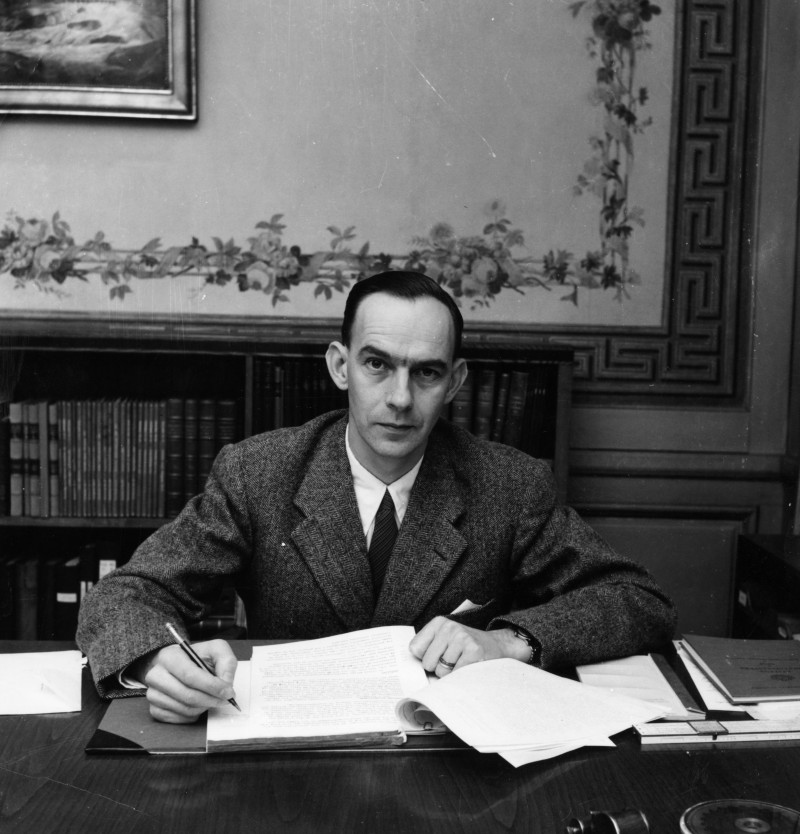
Åke Rusck, Director general of Vattenfall 1948–1958. Year: - | Place: - | Creator: Okänd | ID: VF000080
The period after the Second World War saw feverish expansion at Vattenfall. Around a dozen large power plants were built, with thousands of people involved in the work. As a result, the number of work-related accidents also increased. In the first half of the 1950s, when Åke Rusck was Director General, employee safety rose to the top of the agenda. Vattenfall kept statistics of the number of accidents and injuries at work, among other things. Between 1953 and 1954, the number of travel accidents increased significantly. At that time Vattenfall had about 1,500 company vehicles and personnel travelled in around 15,000 vehicles. Something needed to be done about all the accidents.
Vattenfall contacted the vehicle manufacturers who supplied Vattenfall with vehicles and suggested better protection by means of a seat belt. The manufacturers showed little interest, arguing that the seat belt would frighten motorists – they would assume travelling by car was dangerous.
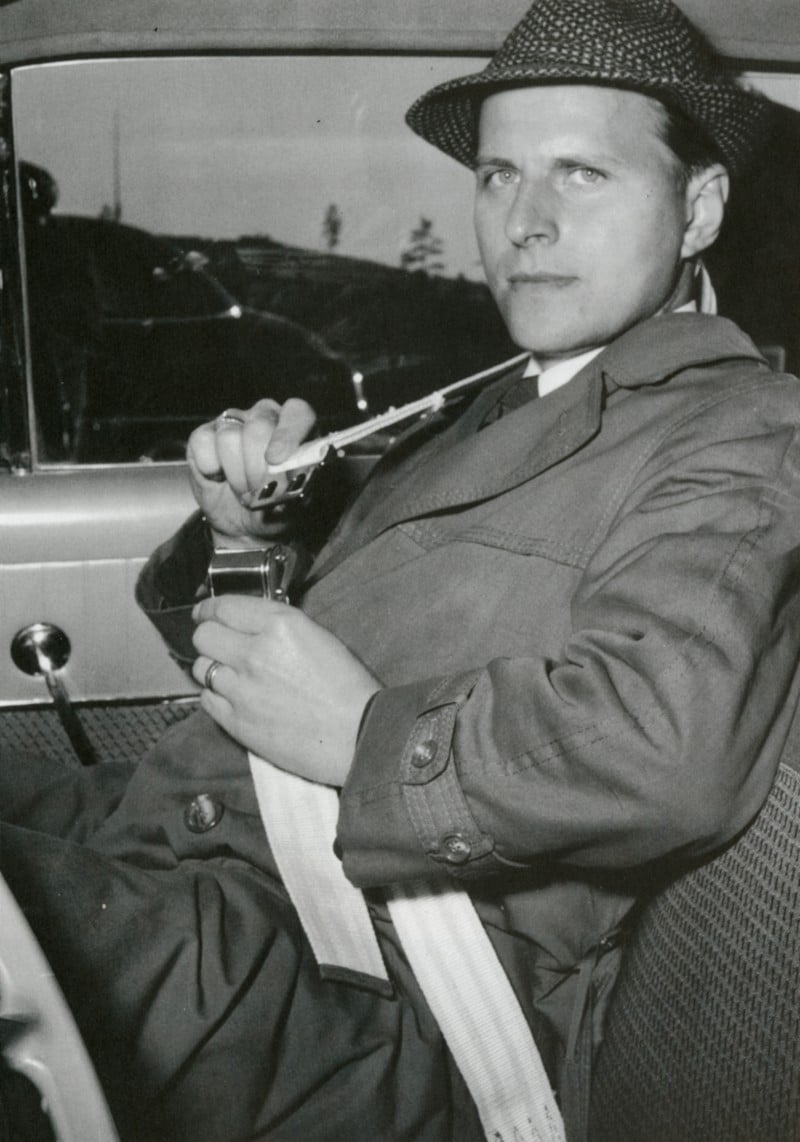
Engineer Bengt Odelgard, Vattenfall. One of the creators behind the Vattenfall seat belt. Year: 1956 | Place: - | Creator: Okänd | ID: VF100003
Two of Vattenfall's engineers, Bengt Odelgard and Per-Olof Weman, were then given the job of producing a seat belt directly for Vattenfall. The belts already on the market were not considered up to scratch. The two engineers established contacts in the USA, among other things, to keep in touch with the development work going on there. Based on these experiences, it was possible to specify requirements for a car seat belt.
Back in Sweden, Vattenfall's engineers carried out a number of experiments. For example, using a crane, they hoisted cars containing dummies up to a great height and then released them. There was also a test facility where crash tests with cars were carried out. This research and investigation work resulted in a diagonal seat belt, known as the 'Vattenfall seat belt'. Until the mid 1960s, this type of belt was the standard in Sweden and several other European countries.
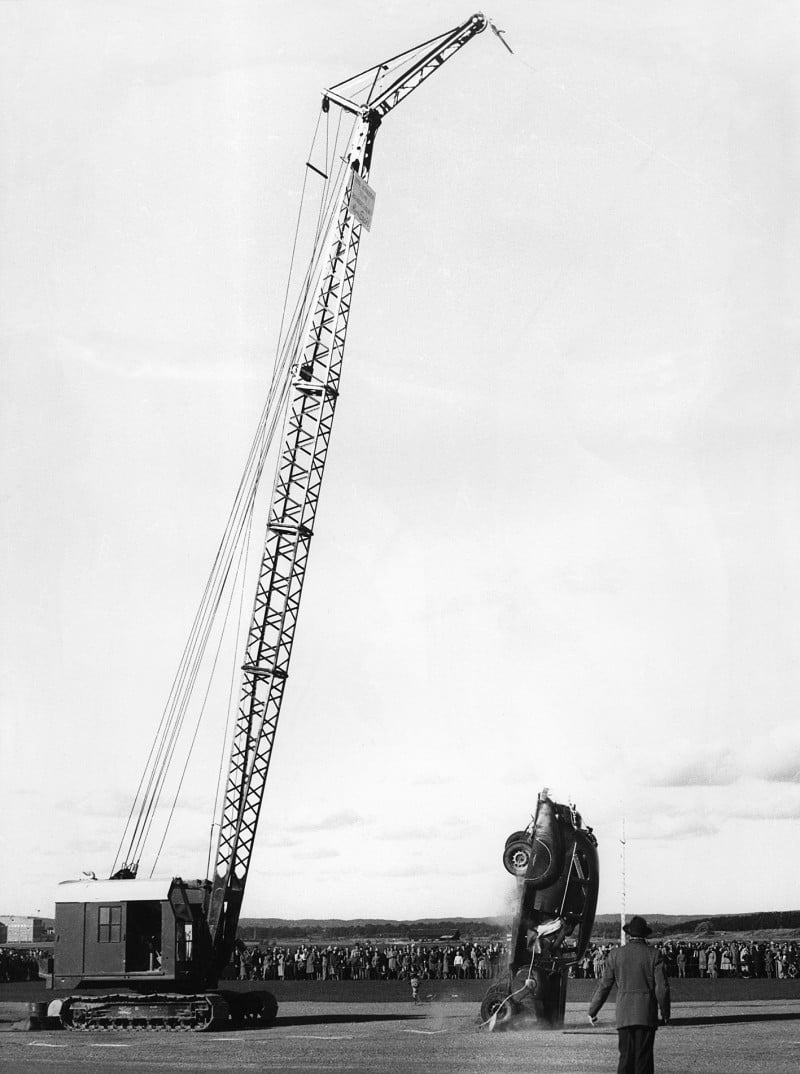
Crane lifting car during crash test. Year: 1950 | Place: - | Creator: Vattenfall | ID: VF000083

Vattenfall seat belt commercial from 1958. From the book 'Bilbältet: Svenskt utvecklingsarbete för global bilsäkerhet' by Rune Andréasson and Claes-Göran Bäckström. Year: 2000 | Place: - | Creator: Okänd | ID: VF001004
Cooperation with Volvo

Gunnar Engellau. CEO of Volvo 1956-1971. Year: 1956 | Place: - | Creator: Okänd | ID: VF000084
Vattenfall started fitting seat belts in its vehicles in 1956. The same year Volvo also began to show interest in installing seat belts in its cars. The reason for Volvo's change of heart was largely down to chief surgeon Stig Lindgren in Falun. Lindgren was medical advisor to Vattenfall's vehicle safety group and was acquainted with the newly appointed head of Volvo, Gunnar Engellau. Lindgren presented the idea of equipping cars with seat belts to the Volvo boss. Certain Volvo models came fitted with the 'Vattenfall seat belt' as standard in 1958. From 1959, all Volvo cars had a lap-diagonal seat belt as standard, a belt based on the research and development work carried out by Vattenfall.
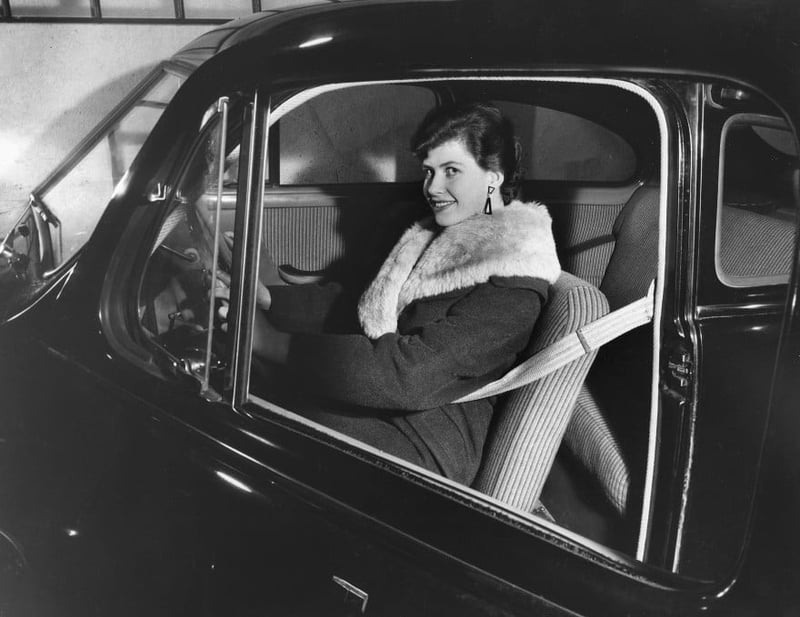
The Vattenfall seat belt Year: 1956 | ID: VF000082
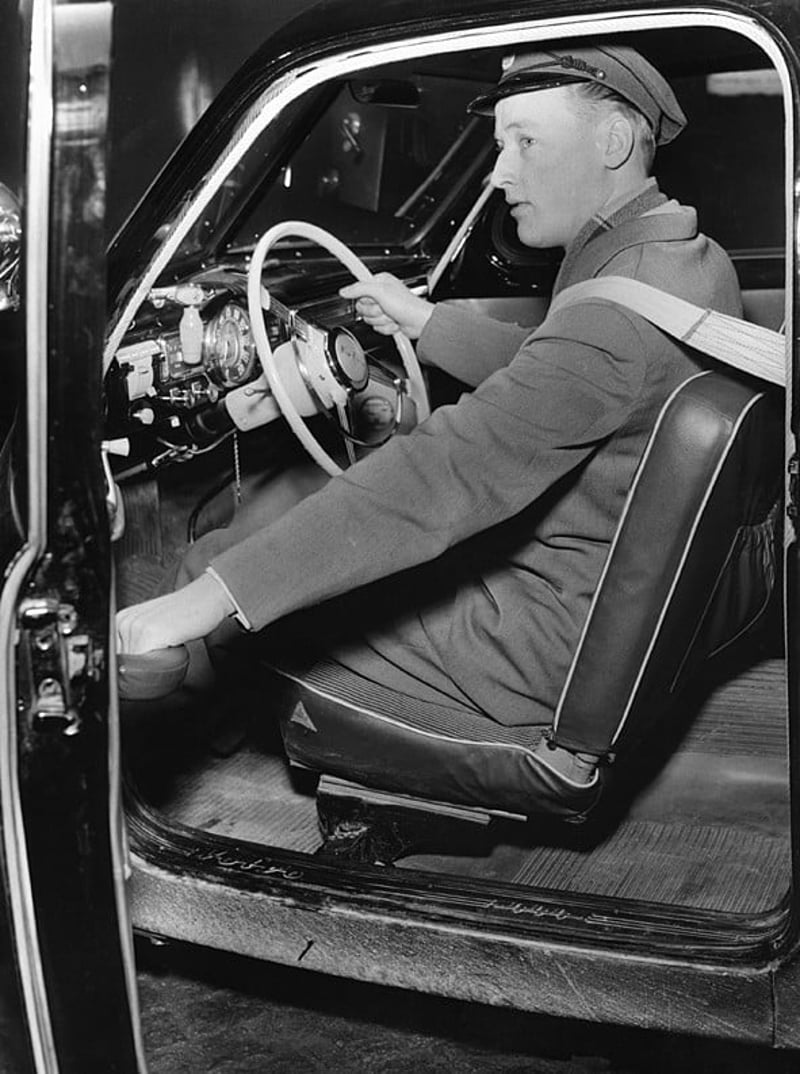
The Vattenfall seat belt. Year: 1956 | Place: - | Creator: Unknown | ID: VF000081
Video player requires marketing cookies.
To view this content please click here to allow marketing cookies.
Vattenfall's development of a safety belt for cars in 1957 (in Swedish)




